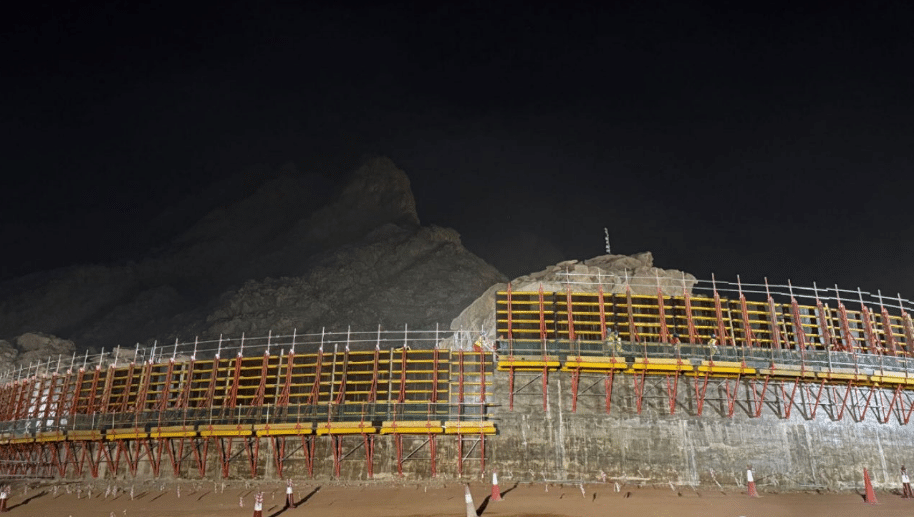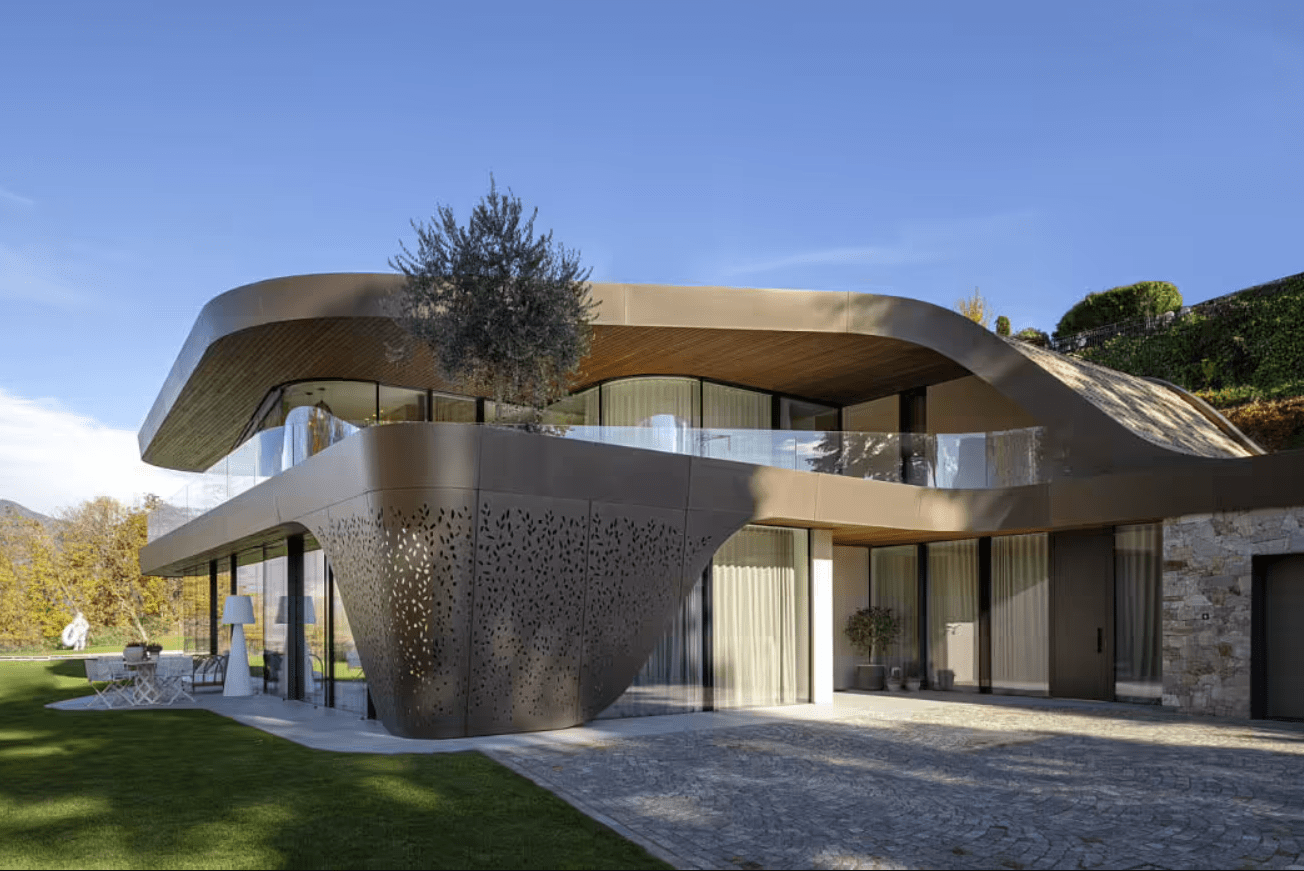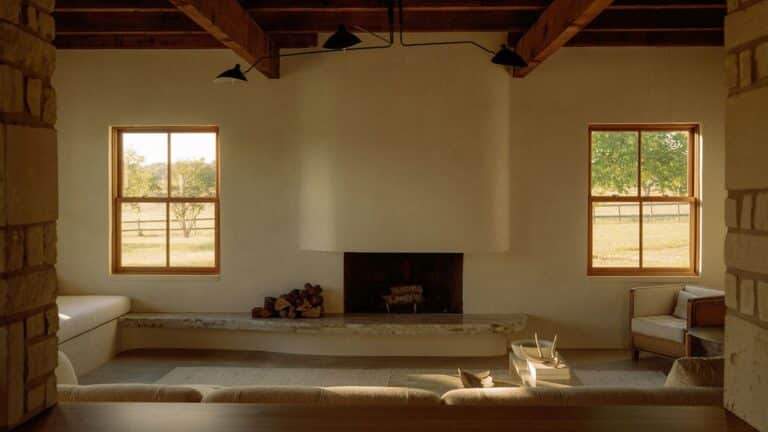The dam in the Trojena project is one of the most prominent infrastructure projects within the NEOM area in northwestern Saudi Arabia. The main objective of the project is to create an artificial lake stretching 2.8 kilometers, which will serve as a central component of a mountain tourism destination designed to support winter sports and develop the region’s tourism sector. The project involves the construction of three dams with different technical specifications and functions. Sustainability and environmental integration are core principles of the design and execution process.
This article explores the technical specifications of the dam, its intended purpose, the company responsible for its implementation, its architectural design, current progress, and its importance within Trojena’s vision as an international tourist hub.

Location and Core Objectives
The dam is located at the heart of the Trojena project, a mountainous area within NEOM that sits at an elevation ranging between 1,500 and 2,600 meters above sea level. The primary goal of the dam is to provide structural support for an artificial lake that will be used as part of the infrastructure for mountain tourism and winter sports. The lake will cover an area of approximately 1.5 square kilometers and include an island designated for diving and exploration activities.
The dam plays a foundational role in preparing Trojena to host the 2029 Asian Winter Games, reinforcing its ambition to become a global center for winter sports and high-end tourism.
Technical Specifications of the Dams
The project includes the construction of three dams, each with distinct materials and capacities:
| Type of Dam | Material Used | Height (m) | Length (m) | Volume (m³) |
|---|---|---|---|---|
| Main Dam | Roller-Compacted Concrete (RCC) | 145 | 475 | 2.7 million |
| Secondary Dam | Roller-Compacted Concrete (RCC) | Not specified | Not specified | Not specified |
| Third Dam | Rockfill | Not specified | Not specified | 4.3 million |
Source: Official statements from the project developers
The main dam, made of roller-compacted concrete, is the largest structure in the project. With a height of 145 meters and a length of 475 meters, it represents a significant engineering achievement in the region.
Contractor and Construction Approach
Italian firm WeBuild was awarded the contract to construct the dams under a $4.7 billion agreement signed in January 2024. The company is applying modern techniques, including the reuse of excavated rocks for lining the lakebed and building parts of the dams—recycling up to 90,000 cubic meters weekly.
Architectural Design and Environmental Integration
The dam is not just a functional structure but also an integrated architectural element. It features a “bow” shape with embedded spaces, enhancing both visual appeal and practical utility. The surrounding natural reserve highlights the commitment to preserving the local ecosystem while integrating human-made structures into the landscape.
Importance of the Project in Developing Trojena
The dam and the resulting lake form a crucial part of Trojena’s vision to become the first large-scale outdoor ski destination in the Arabian Peninsula. The development includes over 30 kilometers of ski slopes, luxury hotels, wellness resorts, and various recreational activities. Hosting the 2029 Asian Winter Games underscores the project’s strategic significance in positioning the region on the global tourism map.
Current Progress (May 2025)
As of May 2025, visible progress has been made in the concrete barrier works of the main dam. Nighttime images show scaffolding structures around the dam, while daytime photos illustrate the advancement in the overall framework.
ArchUp Opinion – Analysis and Critique
From a technical standpoint, the Trojena dam represents a major engineering challenge due to the complex topography of the high-altitude mountain terrain. The choice of roller-compacted concrete reflects a deep understanding of sustainability and durability requirements. However, some critical observations remain.
While material recycling efforts are commendable, there is still limited transparency regarding the long-term ecological impact, especially given the proximity to protected natural reserves. Additionally, questions arise about the feasibility of hosting a major winter sports event in a region not traditionally associated with such climates or infrastructure.
If the goal is economic diversification, investments like this must be supported by detailed, long-term studies on economic and social returns—not just symbolic milestones in a broader development plan.
Frequently Asked Questions (FAQ)
| Question | Answer |
|---|---|
| What is the purpose of building the dam in Trojena? | To support the creation of an artificial lake that serves mountain tourism and winter sports. |
| What is the height of the main dam? | 145 meters. |
| Who is executing the project? | WeBuild, an Italian construction company. |
| When will the project be completed? | Expected completion before 2029 to host the Asian Winter Games. |
| Is environmental sustainability considered during construction? | Yes, excavated rocks are being reused, and environmental interventions are minimized. |
Summary Table of Key Points
| Category | Details |
|---|---|
| Location | Trojena, within NEOM in northwestern Saudi Arabia |
| Purpose | Creation of an artificial lake to support tourism and winter sports |
| Number of Dams | 3 |
| Main Dam Type | Roller-Compacted Concrete |
| Main Dam Height | 145 meters |
| Executing Company | WeBuild (Italy) |
| Contract Value | $4.7 billion |
| Construction Progress | Noticeable advancement as of May 2025 |
| Sustainability Approach | Reuse of excavated materials |
| Strategic Significance | Part of the Trojena project set to host the 2029 Asian Winter Games |







